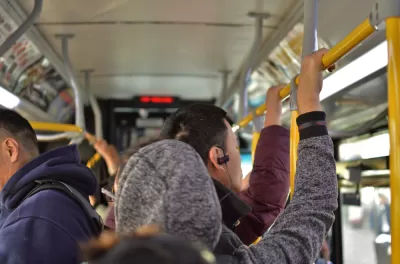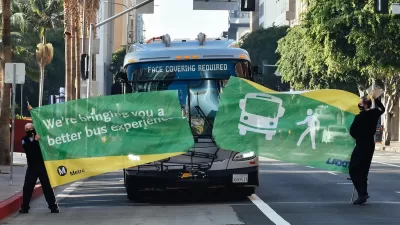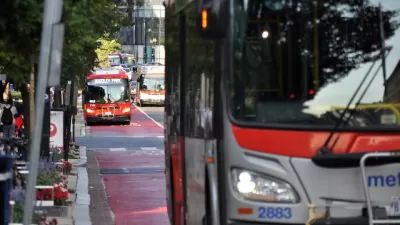A NACTO report highlights the importance of bus-friendly policies and infrastructure for boosting ridership numbers and reducing urban congestion and pollution.

To grow bus ridership, improve service. That’s the conclusion of a new (but unsurprising) report from the National Association of City Transportation Officials (NACTO), writes Dan Zukowski in Smart Cities Dive.
More specifically, the report highlights three key areas where transit agencies and city officials can take action: ensuring all-day, frequent bus service; redesigning streets for buses with dedicated bus lanes, signal priority, and improved infrastructure; and adopting broader policy reforms that support transit, such as adjusting parking fees, discouraging driving, and promoting walkability and mixed-use development.
The report provides examples of successful initiatives, such as New York City’s 14th Street busway and transit signal priority in Minneapolis. It also highlights the potential for speedy action from local agencies. “For example, faced with the need to shut down a major subway line for repairs this month, Boston quickly created dedicated bus lanes and implemented parking restrictions along several major streets to allow for temporary shuttle bus services.”
FULL STORY: Dedicated lanes, frequent service key to increasing bus ridership: NACTO

Alabama: Trump Terminates Settlements for Black Communities Harmed By Raw Sewage
Trump deemed the landmark civil rights agreement “illegal DEI and environmental justice policy.”

Planetizen Federal Action Tracker
A weekly monitor of how Trump’s orders and actions are impacting planners and planning in America.

The 120 Year Old Tiny Home Villages That Sheltered San Francisco’s Earthquake Refugees
More than a century ago, San Francisco mobilized to house thousands of residents displaced by the 1906 earthquake. Could their strategy offer a model for the present?

In Both Crashes and Crime, Public Transportation is Far Safer than Driving
Contrary to popular assumptions, public transportation has far lower crash and crime rates than automobile travel. For safer communities, improve and encourage transit travel.

Report: Zoning Reforms Should Complement Nashville’s Ambitious Transit Plan
Without reform, restrictive zoning codes will limit the impact of the city’s planned transit expansion and could exclude some of the residents who depend on transit the most.

Judge Orders Release of Frozen IRA, IIJA Funding
The decision is a victory for environmental groups who charged that freezing funds for critical infrastructure and disaster response programs caused “real and irreparable harm” to communities.
Urban Design for Planners 1: Software Tools
This six-course series explores essential urban design concepts using open source software and equips planners with the tools they need to participate fully in the urban design process.
Planning for Universal Design
Learn the tools for implementing Universal Design in planning regulations.
Clanton & Associates, Inc.
Jessamine County Fiscal Court
Institute for Housing and Urban Development Studies (IHS)
City of Grandview
Harvard GSD Executive Education
Toledo-Lucas County Plan Commissions
Salt Lake City
NYU Wagner Graduate School of Public Service





























